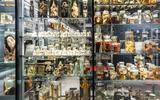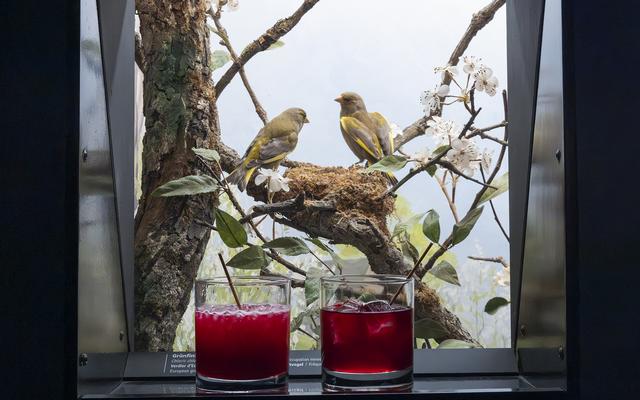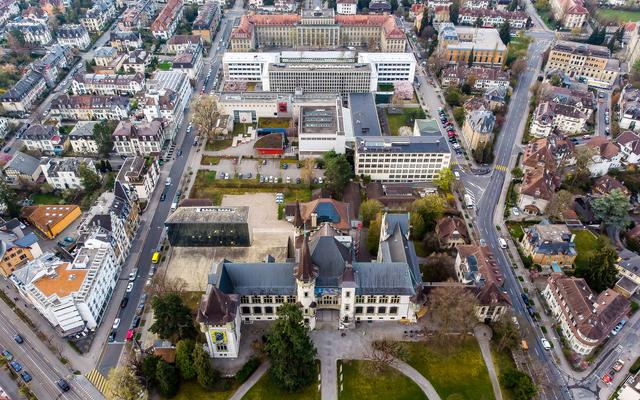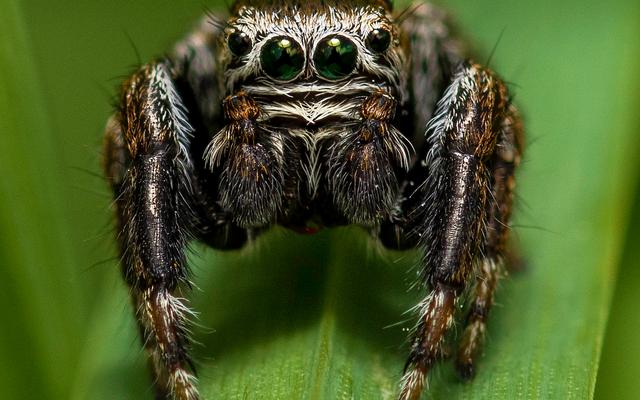With more than 60 million specimens of animals, plants, fungi, rocks, soil samples and fossils, Switzerland’s museums, universities, and botanical gardens store a remarkable scientific and patrimonial national treasure. However, less than one in five of these objects is digitized. This means that a large part of some unique data on biodiversity and the environment is not easily accessible for research, education and society.
Objectives:
- Promote modern standards in management and curation of collections
- Modernise and digitise natural history collections
- Provide open access to harmonised specimen data of Swiss institutions through an online-portal, the Swiss Virtual Natural History Collection (SVNHC)
- Promote and support the scientific potential of collections for research
- Integrate the Swiss natural history collections into international initiatives
The following projects of the Natural History Museum are supported within SwissCollNet:
- Pteromalidae in Swiss Collections: The project Pteromalidae in Swiss Collections aims to establish a comprehensive database of the dry mounted specimens in as many Swiss institutions as possible. The Pteromalidae collections are housed in 7 major institutions: Natural History Museums of Aargau, Basel, Bern, Geneva, Lausanne and Solothurn, as well as in the Entomological Collection at the ETH in Zurich. The collections comprise about 22000 specimens. The Pteromalidae are a major group of parasitic wasps, important in basic and applied research. Having a complete specimen database of the Pteromalidae in Swiss Collections on the Swiss Virtual Natural History Collection (SVNHC) platform will bring the family automatically to forefront of research considerations. As most specimens were collected in the context of biological control projects, the result will not only be a specimen database, but also a database on host-parasitoid relationships. Finally, the specimens will not only be databased, but also be largely re-identified. Hence, it is to be hoped, that this project will stimulate the interest of future generations of specialists in this ecologically and economically most important group.
- 21st century curation - best practices for expansion and providing accessibility of vertebrate collections: Natural history collections and databases document the diversity of life on Earth and serve as an important basis for our understanding of evolution. Correctly dated and preserved museum specimens are therefore indispensable sources of data for biological and applied research. Consequently, natural history museums must constantly expand their collections in a targeted manner based on scientific standards. In this context, the conservation of objects is a time-consuming and cost-intensive process, which is, however, a prerequisite for any subsequent scientific use of natural history collections. The project at the Museum of Natural History Bern, funded by SwissCollNet, will lead to a significant expansion and better cataloguing of the vertebrate collection. A total of 3000 newly collected specimens as well as 350 historical skeletons in poor condition will be prepared, sampled and digitally recorded for the collection. The newly collected data will be made available to superordinate databases and thus made accessible to researchers all over the world. In this model project, standards for the processing of newly collected material but also for the preservation of historical objects in vertebrate collections in general will be further developed. In the context of a workshop, best practices in extension and curation of vertebrate collections will be shared with other institutions as a contribution to maintaining high standards in Switzerland's natural history collections.
- Anwil fossil collection, excavation 2014: Identification and digitisation of the material of three museums: The rust red fossils that can be discovered with a little luck in the freshly harrowed fields in Anwil (BL) have been known since the 19th century. However, the Middle Jurassic strata (Bathonian/Callovian), from which the fossils originate, are not naturally exposed anywhere. Therefore, the two Natural History Museums of Bern (NMBE) and Basel (NMBE) and Archaeology and Museum Baselland, Liestal (AMBL) carried out a large-scale scientific excavation in 2014. The rust red rocks brought to light are packed with a very diverse and well preserved fauna. About 8 years after the excavation, most of the material has been dissected. As part of the project "The fossil collection of the excavation Anwil 2014", all the material from all three institutions is to be determined and catalogued according to modern standards. This is the only way to ensure that the cultural property remains available for future generations. Of particular scientific interest is the high diversity of the ammonite fauna. An analysis of the changes between the individual layers allows to draw conclusions about the migratory movements as well as the development of the marine inhabitants. In addition, the fauna enables reliable dating and international correlation with geological find layers of the same age from other areas of the world.
-
Geomodule (Integrating Geoscience Collections into Specify Software): This project stands at right angles to the diverse SwissCollNet project landscape. While the vast majority of projects aim to digitize collections or parts of collections, this internationally supported project is laying the foundations for this.
In the last decades, as a consequence of the climate and biodiversity crises, it became more and more important to collect and digitize biological collections and to make these biodiversity data available to research, NGO's and also administrations as basic data. For biological collections, large projects such as GBIF, BIOCASE or IDigBio were created, behind which ultimately stands a comprehensive database service that "harvests" data and makes it accessible. However, similar vessels for earth science collections have been neglected. Only in recent years has the need for such solutions for earth science collections also become more apparent. One problem, however, has been the strong focus of today's natural history museum databases on biodiversity data, because to date very few of these databases can also capture earth science objects in detail. One of the most broadly internationally supported natural science databases is SPECIFY, an open source database being developed at the University of Kansas in the USA. To date, this database also does not have a module that would allow the capture of earth science objects. Only paleontological data can be recorded, unfortunately still with insufficient data depth.
For this reason, the project Geomodul (Integrating Geoscience Collections into Specify Software) was submitted to SwissCollNet. This is a collaboration project of the Natural History Museums of Basel, Bern, Geneva and Lausanne. The goal of this project is to develop, in collaboration with the SPECIFY consortium, an earth science module for this software. The module will then be an integral part of the database software and thus be available to the international community. Since SPECIFY is already operated by several institutions in Switzerland, there is a direct benefit for Swiss institutions as well as for the international users of this platform.



